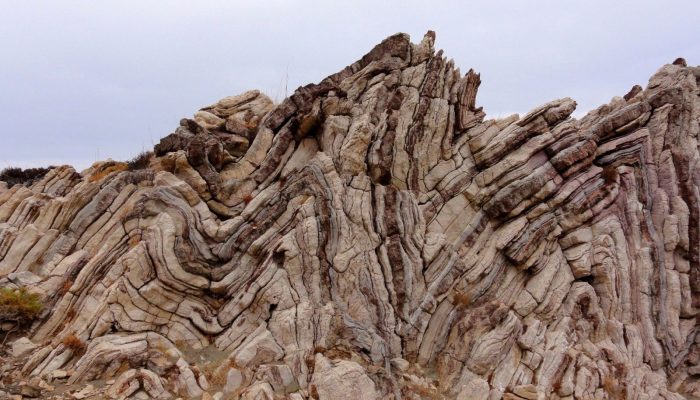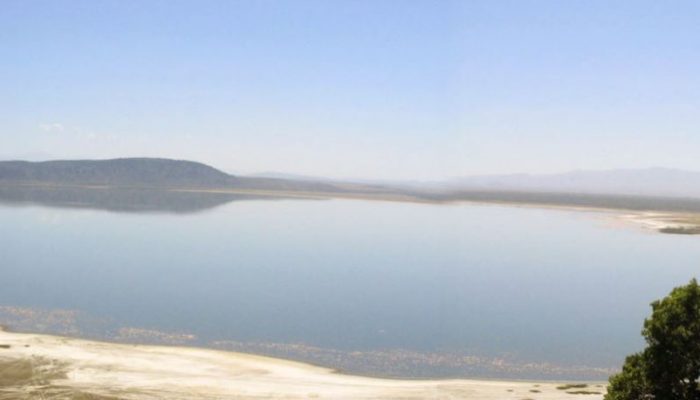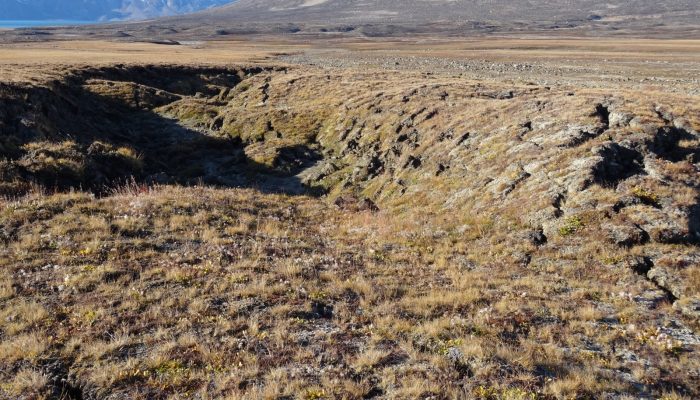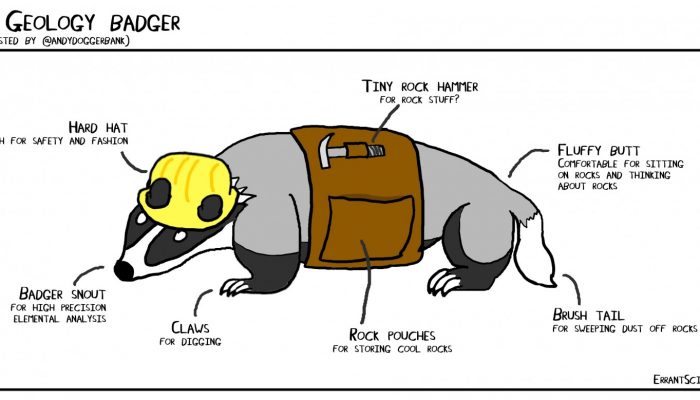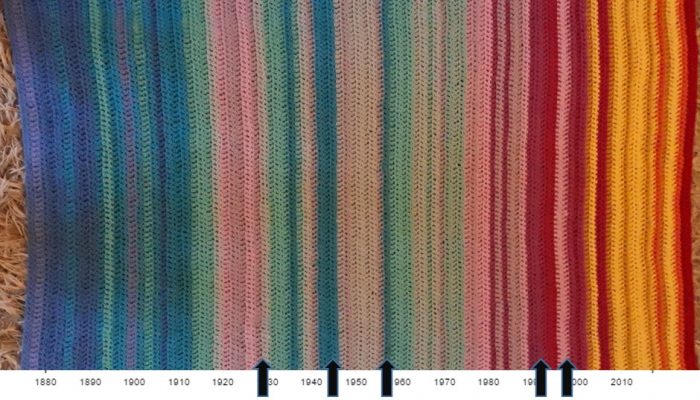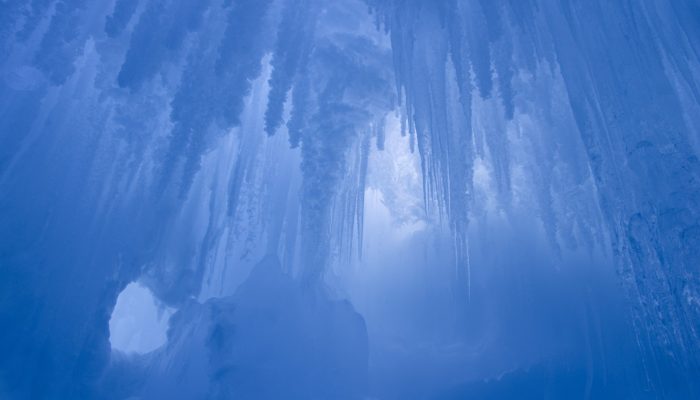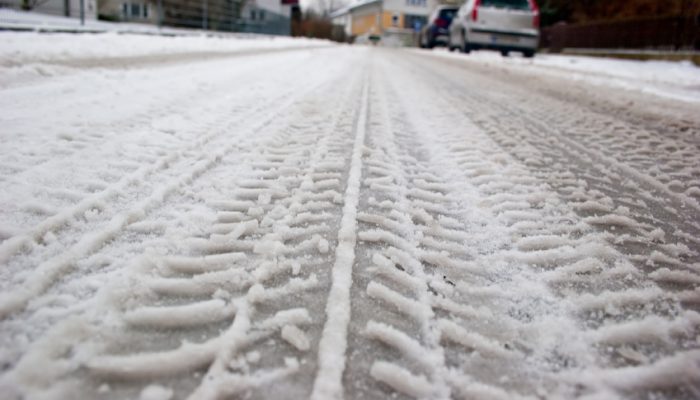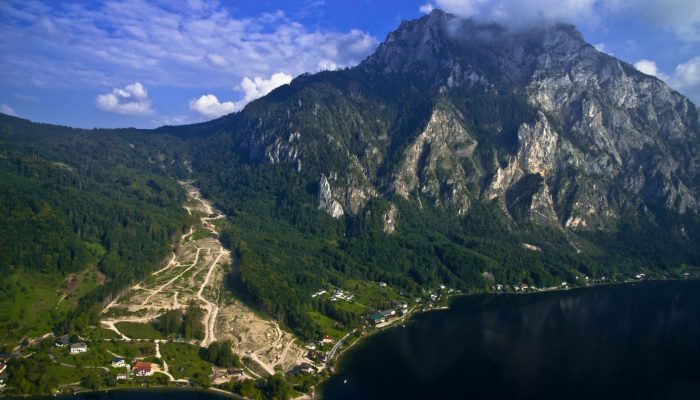Folding is one of the most common geologic phenomena in the world. I should start with defining the term ‘deformation’ in order to understand the folding process better. In geology, deformation is an alteration of the size or shape of rocks. Deformation is caused by stress, the scientific term for force applied to a certain area. Stresses on rocks can stem from various sources, such as ...[Read More]
WaterUnderground
How prehistoric water pit stops may have driven human evolution
Post by Matthew Robert Bennett, Bournemouth University and Mark O Cuthbert, Cardiff University Our ancient ancestors seem to have survived some pretty harsh arid spells in East Africa’s Rift Valley over five million years. Quite how they kept going has long been a mystery, given the lack of water to drink. Now, new research shows that they may have been able to survive on a small networks of sprin ...[Read More]
Cryospheric Sciences
Image of the Week – When the dirty cryosphere destabilizes!
Ice is usually something you see covering large ocean areas, mountain tops and passes or as huge sheets in polar regions. This type of ice is clearly visible from space or with the naked eye. There is, however, a large volume of ice that is less visible. This ice is distributed over the polar and high alpine permafrost regions; and is the ice hidden below ground. It might be hidden, but that doesn ...[Read More]
GeoLog
Cartooning science at EGU 2017 with Matthew Partridge (a.k.a Errant Science)
Most researchers are regular conference-goers. Tell a geoscientist you are attending the EGU General Assembly and they will most likely picture rooms full of people listening to a miriad of talks, many an hour chatting to colleagues old and new and you desperately trying to find your way around the maze that is the Austria Centre Vienna (where the conference is held). Describing your experiences t ...[Read More]
Atmospheric Sciences
The art of turning climate change science to a crochet blanket
We welcome a new guest post from Prof. Ellie Highwood on why she made a global warming blanket and how you could the same! What do you get when you cross crochet and climate science? A lot of attention on Twitter. At the weekend I like to crochet. Last weekend I finished my latest project and posted the picture on Twitter. And then had to turn the notifications off because it all went a bit noisy. ...[Read More]
GeoLog
Enmeshed in the gears of publishing – lessons from working as a young editor
Editors of scientific journals play an important role in the process research publication. They act as the midpoint between authors and reviewers, and set the direction of a given journal. However, for an early career scientist like me (I only defended my PhD in early December 2016) the intricacies of editorial work remained somewhat mysterious. Many academic journals tend to appoint established, ...[Read More]
GeoLog
Imaggeo on Mondays: Erebus Ice Tongue Cave
The interior of this ice cave at the Erebus glacier tongue is cathedral-like. Imagine standing in the cold interior, icy blue stalactites dangling from the cave roof; the sense of awe is overwhelming. Mt. Erbus is the world’s southernmost active volcano on Ross Island, in Antarctica. Winding its way down its lower slopes is Erebus glacier. Projecting out from the coast, a jagged and thin tongue ma ...[Read More]
Geology for Global Development
GfGD Strategy 2017-2021: Championing Sustainable Development
Today we publish the GfGD Strategy (2017-2021), outlining our vision and the key objectives that will shape our work over the next 5-years. In 2015, the international community agreed the UN Sustainable Development Goals (SDGs). These goals aim to eradicate global poverty, promote sustainable consumption patterns, and facilitate sustained and inclusive economic growth, social development and envir ...[Read More]
WaterUnderground
Is highway de-icing ‘a-salting’ our aquifers?
Post by Mark Cuthbert, Cardiff University, and Michael Rivett, GroundH20 plus Ltd; University of Strathclyde. If you live in a cold climate, have you ever wondered where all the de-icing salt (or ‘grit’ as we call it in the UK) that gets spread on the roads in winter time ends up, aside from that accumulating salty grime that coats your car? As you might expect, most of the salt gets washed off th ...[Read More]
GeoLog
GeoSciences Column: Can seismic signals help understand landslides and rockfalls?
From the top of a small gully in the French Alps, a 472 kg block is launched into the chasm. Every detail of it’s trajectory down the slope is scrutinised by two cameras and a network of seismometers. They zealously record every bounce, scrape and tumble – precious data in the quest to better understand landslides. What makes landslides tick? In 2016, fatalities caused by landslides tipped 2 ...[Read More]

